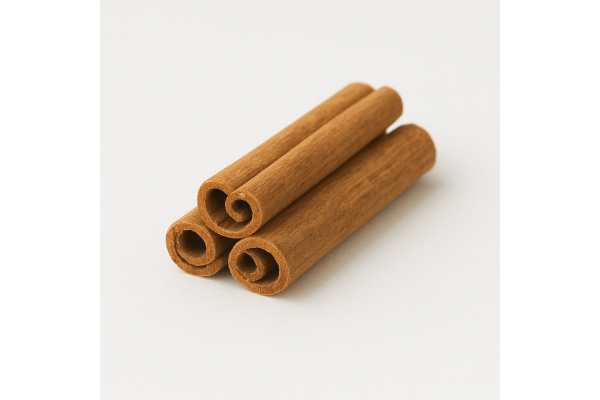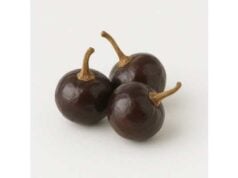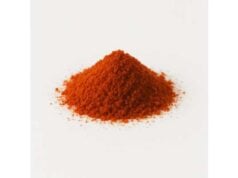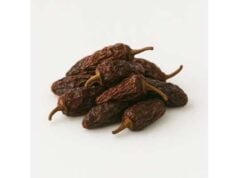
Ceylon cinnamon is often called “true cinnamon,” and that nickname reflects both its history and its distinctive qualities. Harvested from the inner bark of the Cinnamomum verum tree, it has a gentle, sweet aroma, fine layered quills, and a more nuanced flavor than the stronger cassia cinnamon that dominates supermarket shelves.
Beyond taste, Ceylon cinnamon draws attention for its lower coumarin content, which makes it better suited for regular use, and for its potential roles in blood sugar support, cardiovascular health, and antioxidant protection. At the same time, the science is more modest than many marketing claims suggest, and quality, dose, and individual health status all matter.
This guide walks you through how Ceylon cinnamon differs from other types, what its nutrition and active compounds look like, how research interprets its health effects, where the risks lie, and how to use it in everyday cooking in a way that is enjoyable, realistic, and safe.
Key Takeaways
- Ceylon cinnamon offers a milder flavor and much lower coumarin content than typical cassia cinnamon, making it more suitable for regular use.
- Human trials suggest cinnamon can modestly support blood sugar, body weight, and some cardiovascular markers when combined with standard care and lifestyle changes.
- A practical culinary intake for most adults is around 0.5–1 teaspoon (about 1–3 grams) of verified Ceylon cinnamon per day, a few times per week.
- High-dose supplements and unknown cassia products can raise coumarin exposure and interaction risks, especially in people with liver disease or on blood thinners or diabetes medications.
- People with liver problems, significant medication regimens, or a history of cinnamon allergy should be cautious and seek medical advice before using cinnamon therapeutically.
Table of Contents
- Ceylon cinnamon background and types
- Ceylon cinnamon nutrients and key compounds
- Ceylon cinnamon research based health benefits
- Risks, allergies and safety considerations
- Choosing Ceylon cinnamon and storing it
- Cooking with Ceylon cinnamon for health
- Portions, comparisons and common questions
Ceylon cinnamon background and types
Ceylon cinnamon comes from the inner bark of the Cinnamomum verum tree, native to Sri Lanka and parts of southern India. For centuries it was a highly valued trading commodity, used not only for flavor but also for traditional remedies and religious rituals. Its long association with Sri Lanka is reflected in the name “Ceylon,” the country’s former name, and many of the finest quills still originate from smallholder farms there.
Visually, Ceylon cinnamon quills are thin, light tan, and made of many delicate layers of bark rolled into a tight “cigar.” They are fragile and easy to crumble. Cassia cinnamon, which includes Cinnamomum cassia, Cinnamomum burmannii, and Cinnamomum loureiroi, forms thicker, darker sticks that resemble a single, harder scroll. This difference in structure is one of the easiest ways to distinguish true Ceylon sticks from cassia when you see them side by side.
The flavor profile also sets Ceylon cinnamon apart. It tends to be soft, sweet, and almost floral, with warm spice notes that blend smoothly into fruit, dairy, grains, and mild savory dishes. Cassia is sharper, more intense, and slightly more bitter. That boldness can be desirable in some recipes, such as strong baked goods and spiced meat dishes, but it can dominate lighter dishes more easily than Ceylon.
There are several commercial forms of Ceylon cinnamon:
- Whole quills: Ideal for infusions in teas, mulled drinks, and stews, and for grinding fresh at home.
- Ground powder: Convenient for baking and sprinkling on porridge, yogurt, or fruit.
- Standardized extracts and capsules: Used in research and marketed for blood sugar and lipid support.
- Essential oil: Highly concentrated and used mainly for flavorings and aromatherapy, not for casual internal use.
The distinction between Ceylon and cassia matters for safety as well as flavor. Cassia varieties naturally contain much higher levels of coumarin, a plant compound that can stress the liver in high, prolonged doses. Ceylon cinnamon typically contains coumarin only in trace amounts. For people who enjoy cinnamon daily or consider supplement use, knowing which type they are using becomes important.
Understanding where Ceylon cinnamon comes from, how it differs from other species, and which forms are available lays the groundwork for making informed choices about both flavor and health.
Ceylon cinnamon nutrients and key compounds
Ceylon cinnamon contributes only a small number of calories to the diet, but it delivers a dense package of micronutrients and phytochemicals per gram. A level teaspoon of ground cinnamon (about 2–2.6 grams) contains roughly 6–8 kilocalories, made up mostly of carbohydrate, including fiber. Protein and fat are present only in trace amounts at typical serving sizes, so cinnamon does not significantly affect macronutrient totals.
From a micronutrient standpoint, cinnamon provides:
- Manganese: A trace mineral involved in bone metabolism and antioxidant enzymes. Cinnamon is unusually rich in manganese for such a small amount of food.
- Calcium: Present at a moderate level per gram, though the absolute contribution at normal intakes is still modest compared with dairy or fortified plant drinks.
- Small amounts of other micronutrients: Including vitamin K, iron, and some B vitamins.
The more distinctive aspect of Ceylon cinnamon is its array of bioactive compounds. The inner bark contains an essential oil dominated by cinnamaldehyde, which gives cinnamon much of its characteristic aroma and some of its biological activity. Other components of the oil, such as eugenol and various terpenes, contribute further aroma nuances and may have antimicrobial or antioxidant effects in laboratory models.
In addition to volatile oils, Ceylon cinnamon carries a range of polyphenols, including procyanidins and different flavonoids. These compounds act as antioxidants and may modulate cellular signaling pathways related to inflammation, insulin sensitivity, and vascular function. Many cinnamon extracts used in supplements are standardized for these polyphenols, rather than for the essential oil alone.
Coumarin, a naturally occurring compound that can be toxic to the liver at high chronic intakes, is a crucial difference between Ceylon and cassia. Analytical studies show that cassia cinnamon can contain coumarin at levels near or above one percent of its weight, whereas Ceylon cinnamon generally contains only trace levels, often several hundred times lower. This means that for the same teaspoon of cinnamon, Ceylon typically delivers far less coumarin, which is why it is preferred for frequent or long-term use.
Processing and storage also shape the nutritional and aromatic profile. Grinding exposes more surface area to air, making volatile oils more vulnerable to evaporation and oxidation. Whole Ceylon quills tend to retain their essential oils longer, especially in airtight, opaque containers. Ground cinnamon can lose aroma and potency more quickly, particularly if stored in warm, bright, or humid conditions.
Taken together, Ceylon cinnamon is best understood as a low-calorie vehicle for aromatic oils and polyphenols, with coumarin levels much lower than those found in cassia. This combination underlies both its culinary appeal and its potential for gentle health support when used consistently but moderately.
Ceylon cinnamon research based health benefits
Cinnamon has been studied for a range of health outcomes, with most attention on blood sugar control, body weight, and cardiovascular risk factors. Not all studies distinguish clearly between Ceylon and cassia, but recent work has begun to focus specifically on Ceylon cinnamon or its extracts.
One of the most discussed areas is glycemic control in people with type 2 diabetes or prediabetes. Numerous randomized controlled trials and several meta-analyses have examined the impact of cinnamon supplements on markers such as fasting blood glucose, glycated hemoglobin (HbA1c), and post-meal glucose levels. Overall, these analyses suggest that cinnamon can produce modest improvements in these markers for some participants. Typical changes include small reductions in fasting glucose and HbA1c when cinnamon is used alongside standard medical care and dietary advice, rather than in place of them.
A key step forward has been randomized, double blind controlled trials using standardized Ceylon cinnamon (Cinnamomum zeylanicum) extracts. These studies generally report that Ceylon cinnamon can improve select metabolic markers, such as fasting glucose or aspects of the lipid profile, over periods of several weeks to a few months, while appearing safe at the doses tested. Average effects are moderate, not dramatic, reinforcing the idea that Ceylon cinnamon should be considered an adjunct rather than a primary treatment.
Meta-analyses that include multiple cinnamon species often find small reductions in HbA1c, fasting blood glucose, body mass index, and triglyceride levels across diverse study designs. Some also report improvements in waist circumference or blood pressure. However, results vary between studies, with some trials showing little or no effect. Differences in cinnamon species, dose, extract standardization, baseline health status, and adherence all likely contribute to this variability. The most consistent improvements tend to appear in people with impaired glucose metabolism, using standardized preparations, over several months.
Beyond metabolic outcomes, cinnamon’s polyphenols and essential oils have been investigated for their antioxidant and anti-inflammatory effects. In laboratory models, Ceylon cinnamon extracts can reduce oxidative stress markers and influence inflammatory pathways. In humans, a few controlled studies suggest that cinnamon supplementation may modestly improve measures like total antioxidant capacity, although this line of research is still developing.
Cinnamon also shows antimicrobial activity in vitro against certain bacteria and fungi, including species involved in dental plaque and food spoilage. This has practical implications for food preservation and oral health, but it does not by itself justify medicinal use for infections.
For the cardiovascular system, trials and pooled analyses examining cinnamon’s effects on blood lipids and blood pressure report mixed but cautiously positive results. Some studies show reductions in triglycerides and total cholesterol or mild improvements in systolic and diastolic blood pressure, while others find no significant changes. Again, dose, duration, and extract type appear to be important.
Finally, safety-focused Ceylon cinnamon trials that actively monitor liver enzymes and other safety markers have generally not found signs of toxicity at the studied doses and durations. This aligns with the low coumarin content of Ceylon cinnamon and supports its use in moderate amounts as part of a broader lifestyle program.
Overall, the research paints a picture of modest, supportive benefits rather than dramatic effects. Ceylon cinnamon can play a helpful role in a comprehensive plan that includes diet, exercise, sleep, and appropriate medical care, but it is not a stand alone solution for chronic conditions.
Risks, allergies and safety considerations
Even though Ceylon cinnamon is generally safer than cassia with respect to coumarin, it is still a biologically active substance and needs to be treated with basic respect. The main concerns involve misidentification of cinnamon type, overuse of supplements, liver health, allergies, and interactions with medications.
Coumarin exposure is central to cinnamon safety. Authorities in Europe and elsewhere have established a tolerable daily intake for coumarin of about 0.1 milligram per kilogram of body weight per day. Cassia cinnamon can approach or exceed this threshold if used generously because its coumarin content may be around one percent by weight. Ceylon cinnamon, by contrast, usually contains only a tiny fraction of this level. As a result, typical culinary use of verified Ceylon cinnamon stays comfortably within safe coumarin intake ranges for most people.
The problem arises when products are mislabeled or blended. Market surveys have found that some ground cinnamon sold as generic “cinnamon” is actually cassia, and in some cases cassia has been substituted for Ceylon for cost reasons. Consumers who believe they are using low coumarin Ceylon daily may, in reality, be consuming higher coumarin cassia and unknowingly stressing the liver over time, particularly if they also consume other coumarin containing foods or medications.
Liver stress from high coumarin intake can present with symptoms such as fatigue, abdominal discomfort, or jaundice in susceptible individuals, although many people remain asymptomatic until damage is more advanced. People with pre existing liver disease, those who drink heavily, or those taking other liver stressing medications are at higher risk and should be especially cautious about high dose cinnamon supplements or heavy use of cassia-rich products.
Allergic and irritant reactions are another category of risk. Although true cinnamon allergy is relatively rare, it can occur and may present as hives, itching, swelling, wheezing, or, in severe cases, anaphylaxis. There is also a condition called “cinnamon stomatitis” where chewing gum, candies, or other products with concentrated cinnamon flavoring cause sore, inflamed patches in the mouth. Skin contact with cinnamon oil or very concentrated cinnamon preparations can trigger dermatitis or burns, especially if undiluted oil is used directly on the skin.
Medication interactions deserve careful attention:
- Cinnamon’s potential blood sugar lowering effect can compound the action of insulin or other diabetes medications, increasing the risk of hypoglycemia if doses are not adjusted or monitored.
- Coumarin and other cinnamon components may interact with blood thinners and antiplatelet drugs, potentially affecting clotting or bleeding risk, especially at high doses or with cassia.
- Some data suggest that cinnamaldehyde and related compounds might alter how certain drugs are metabolized in the intestines and liver, though much of this evidence is still emerging and based on experimental models.
Because of these possibilities, individuals on anticoagulants, antiplatelet agents, or intensive diabetes regimens should not start cinnamon supplements on their own. Any significant increase in cinnamon intake, especially beyond culinary amounts, should be discussed with a clinician.
For pregnancy and breastfeeding, ordinary culinary use of cinnamon is generally considered acceptable as part of a varied diet. High dose supplements, essential oils, and medicinal style use, however, lack robust safety data and are usually not recommended unless specifically prescribed.
In children, occasional cinnamon flavored foods are usually fine, but there is no need to use cinnamon specifically for health benefits. Given their lower body weight, children can exceed coumarin thresholds more easily if consuming cassia rich cinnamon frequently. For families who enjoy daily cinnamon, choosing clearly labeled Ceylon products and keeping portions moderate is a sensible approach.
Used thoughtfully, Ceylon cinnamon at culinary doses is low risk for most healthy adults. The main dangers revolve around misidentified high coumarin cassia, concentrated supplements, and use in vulnerable populations without proper oversight.
Choosing Ceylon cinnamon and storing it
Selecting genuine, good quality Ceylon cinnamon is part of using it safely and effectively. Because cassia is cheaper and more widely available, it is easy to buy it unintentionally, especially when products are simply labeled “cinnamon” without species information.
When shopping, look for labels that clearly state “Ceylon cinnamon,” “Cinnamomum verum,” or “Cinnamomum zeylanicum.” Some producers also use the phrase “true cinnamon,” although that wording is not regulated and can be used loosely. For whole sticks, visual inspection helps: Ceylon quills are light tan, composed of many thin, papery layers rolled together, and tend to be brittle. Cassia sticks are darker, thicker, and usually formed from a single curved layer of bark, which feels harder to the touch.
For ground cinnamon, evaluating quality relies more on labeling and the reputation of the producer. Helpful signs include:
- Detailed ingredient information, including botanical name and country of origin.
- Batch numbers and “best before” dates that demonstrate traceability.
- Clear differentiation between Ceylon and cassia in the product line.
- Communication about testing for contaminants such as heavy metals or microbial load.
Specialty spice merchants, reputable online retailers, and brands that publish quality control information provide extra assurance. Analytical studies and recent regulatory checks have identified cases of mislabeling and fraud in the cinnamon trade, so choosing trusted sources is not just a matter of taste but of safety.
Ethically, Ceylon cinnamon production supports many smallholder farming communities in Sri Lanka. The process of peeling, drying, and grading cinnamon bark is skilled and labor intensive. Fair trade certifications or similar initiatives aim to ensure better wages and working conditions, although such labels are not yet as widespread for cinnamon as for commodities like coffee or cocoa. If you have the option, supporting companies that discuss fair pricing and direct relationships with growers can contribute to more equitable supply chains.
Storage practices at home influence both flavor and the stability of bioactive compounds. Essential oils and polyphenols are sensitive to heat, light, and moisture. To preserve quality:
- Store cinnamon in an airtight container in a cool, dry, dark place, such as a closed cupboard away from the stove or oven.
- Use glass jars or opaque containers when possible to reduce light exposure.
- Avoid shaking cinnamon directly over steaming pots, since rising moisture can clump the powder and encourage spoilage.
Whole Ceylon quills often maintain aroma and potency for two years or more when stored well. Ground cinnamon gradually loses intensity; many people find that its fragrance begins to fade noticeably within 6–18 months after opening. If your cinnamon smells faint or tastes dull even at typical amounts, it is reasonable to replace it.
Given ongoing concerns about mislabeling and coumarin content in some markets, it can also be wise to review occasional news or regulatory updates about cinnamon in your region and to adjust purchasing habits if recurring problems are identified. This extra layer of attention helps ensure that the Ceylon cinnamon you use regularly is both high quality and genuinely low in coumarin.
Cooking with Ceylon cinnamon for health
Ceylon cinnamon is one of the easiest spices to weave into daily meals because it complements both sweet and savory dishes. Its mild, sweet profile makes it particularly suitable for breakfast foods, snacks, and drinks where you want warmth without overwhelming heat.
For breakfast, Ceylon cinnamon works well in:
- Porridge and cereals: Stir ¼–½ teaspoon into oatmeal, quinoa porridge, or muesli along with fruit and nuts.
- Yogurt and cottage cheese: Sprinkle on top with apples, pears, or berries for a dessert like flavor that still feels balanced.
- Smoothies: Blend with banana, oats, nut butter, and milk or a plant based alternative for a filling drink.
In baking, you can use Ceylon cinnamon in muffins, pancakes, quick breads, and cookies. Because it is gentler than cassia, you might slightly increase the amount compared with what a recipe designed for cassia calls for, especially if you want a pronounced cinnamon note. At the same time, it is easy to overdo sugar in cinnamon baked goods, so it is worth keeping overall sweetness in check if cardio metabolic health is a concern.
Ceylon cinnamon also belongs in savory cooking. It partners naturally with:
- Legume and grain dishes, such as lentil stews, chickpea curries, pilafs, and tagines.
- Meats and poultry, where it can add warmth to slow cooked dishes, marinades, or dry rubs.
- Vegetable dishes, especially with pumpkin, squash, carrots, or sweet potatoes.
Whole quills are excellent in long simmered dishes and hot drinks. Add one or two sticks to soups, stews, or mulled beverages and remove them before serving. This method infuses flavor gently and can be easier on the digestion than large quantities of ground cinnamon.
From a nutritional standpoint, Ceylon cinnamon’s main contributions to “healthful cooking” come not from calories, but from flavor and routine. By adding pleasant warmth and sweetness without sugar, it may help some people enjoy less sweetened foods. For example, adding cinnamon and fruit to plain yogurt rather than choosing a pre sweetened version can reduce added sugar intake. Using cinnamon with nuts, seeds, and whole grains can also encourage more frequent consumption of nutrient dense staples.
To preserve delicate aromatic compounds, it is best to avoid exposing ground cinnamon to very high heat for long periods. In practice this means:
- Adding part of the cinnamon toward the end of cooking for quick dishes.
- For slow cooking, using a combination of sticks early in the process and a pinch of ground cinnamon closer to serving time.
- Avoiding prolonged dry toasting of cinnamon on its own, which can dull flavor.
If you are using Ceylon cinnamon with an eye toward metabolic support, consider consistency rather than large one time doses. Incorporating moderate amounts into meals most days of the week is more in line with how it has been studied than occasional heavy “bursts.”
At the same time, be realistic about what Ceylon cinnamon can achieve. It can nudge certain markers in a favorable direction and make healthy foods more appealing, but it does not replace balanced eating, regular movement, adequate sleep, or appropriate medical care.
Portions, comparisons and common questions
Translating research doses and safety thresholds into spoonfuls is one of the most practical concerns for everyday use. A level teaspoon of ground cinnamon weighs about 2–2.6 grams, depending on grind and brand. Most clinical studies use doses between roughly 1 and 6 grams per day of cinnamon powder or equivalent extracts.
For typical healthy adults using verified Ceylon cinnamon, reasonable guidelines are:
- Light, regular use: about ¼–½ teaspoon (0.5–1.3 grams) per day, most days of the week, incorporated into meals.
- Moderate use: up to around 1 teaspoon (2–2.6 grams) per day, spread across meals, if tolerated well and there are no relevant medical issues.
- Higher doses: best reserved for people under medical care, using standardized products, with regular monitoring if cinnamon is part of a therapeutic plan.
For children, there is no clear need to use cinnamon specifically for health outcomes. Small amounts in family meals are usually fine, but frequent use of large quantities, especially of cassia cinnamon, can push coumarin intake toward adult thresholds even at a low body weight. If cinnamon is a daily feature and the type is unclear, switching to well labeled Ceylon products is a simple safety step.
When comparing Ceylon cinnamon to cassia, a few points stand out:
- Coumarin content: Cassia can contain coumarin around one percent by weight; Ceylon typically contains only trace amounts. This is the main reason Ceylon is preferred for frequent use.
- Flavor: Ceylon is sweeter, lighter, and more floral; cassia is stronger and more pungent. Recipes designed for one type may taste different if you swap in the other.
- Price and availability: Ceylon is usually more expensive and may not be stocked in all supermarkets, especially in ground form. It is more often found in specialty shops or online.
Common questions include:
Is Ceylon cinnamon better than cassia for everyone?
For occasional use, such as a dusting on holiday cookies, either type is usually fine. For frequent or daily use, Ceylon’s lower coumarin content makes it a safer default, particularly for children, smaller adults, and anyone with liver concerns.
Can I rely on cinnamon alone to manage blood sugar?
No. While cinnamon can modestly improve some glucose and weight measures in research settings, it is not a substitute for dietary changes, physical activity, or prescribed medications. It may serve as a helpful addition to a broader plan developed with your healthcare team.
Is it safe to take cinnamon capsules without talking to a doctor?
Culinary amounts of Ceylon cinnamon mixed into food are widely considered safe for most healthy adults. Standardized supplements are more concentrated and can interact with medications or underlying conditions, especially diabetes, liver disease, or bleeding disorders. It is prudent to seek medical advice before starting capsules or high dose extracts.
Do I need to avoid cinnamon completely if I have liver disease?
People with liver disease should be particularly cautious about coumarin exposure from cassia cinnamon and about using any supplements without supervision. Small amounts of verified Ceylon cinnamon in food may still be acceptable in some cases, but this is a decision best made with a clinician who understands your specific diagnosis and medication regimen.
How do I know if cinnamon is causing a problem for me?
Possible warning signs include new or worsening heartburn, mouth irritation, skin rashes after contact, or unexplained fatigue and jaundice in the context of heavy cinnamon use. In any of these situations, stop high cinnamon intake and seek medical evaluation.
Within sensible limits, Ceylon cinnamon can be part of a varied diet that supports long term health. It works best as a small, enjoyable part of a broader pattern rather than as a single “superfood” expected to carry most of the burden.
References
- Effects of Cinnamomum zeylanicum (Ceylon cinnamon) Extract on Lipid Profile, Glucose Levels and Its Safety in Adults: A Randomized, Double Blind, Controlled Trial 2025 (RCT)
- Cinnamon Improves Glycated Haemoglobin and Body Mass Index, but Not Inflammatory Parameters in Patients with Type 2 Diabetes: Evidence from a Systematic Review and Meta Analysis of Randomised Controlled Trials 2025 (Systematic Review and Meta-analysis)
- Effects of Cinnamon Supplementation on Lipid Profile: A Systematic Review and Meta Analysis of Randomized Controlled Trials 2024 (Systematic Review and Meta-analysis)
- Assessment of Coumarin Levels in Ground Cinnamon Available in the Czech Retail Market 2012 (Analytical Study)
- Opinion of the Scientific Panel on Food Additives, Flavourings, Processing Aids and Materials in Contact with Food (AFC) Related to Coumarin 2004 (Risk Assessment)
Disclaimer
This article provides general information about Ceylon cinnamon, its potential benefits, and its risks. It does not replace personalized medical advice, diagnosis, or treatment. Individual responses to cinnamon and cinnamon supplements vary, and the suitability of any specific dose or product depends on your medical history, medications, and overall lifestyle. Always consult a qualified healthcare professional before using cinnamon therapeutically, altering prescribed treatment, or starting supplements, especially if you have diabetes, liver disease, cardiovascular conditions, are pregnant or breastfeeding, or are taking blood thinners or other long term medications. Never ignore or delay seeking professional medical advice because of something you have read online.
If you found this article useful, you are kindly invited to share it on Facebook, X (formerly Twitter), or any platform you prefer. Thoughtful sharing helps more readers access balanced, evidence based nutrition information and supports the ongoing work of creating high quality educational content.










